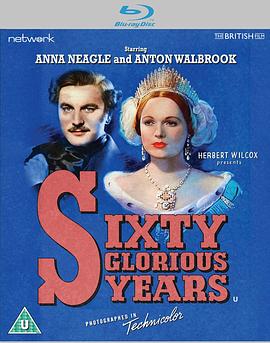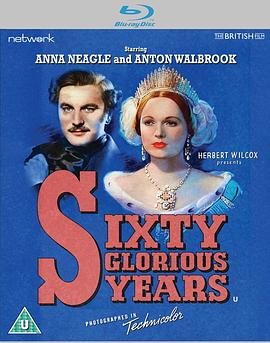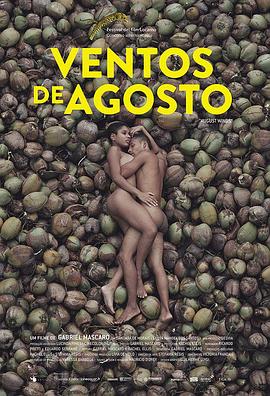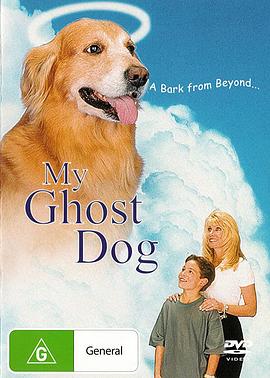『 煤气灯下 』
“ Twenty years ago, old Mrs. Barlow was killed in her home at 12, Pimlico Square f...
| 演员 | Anton Walbrook / Diana Wynyard / Frank Pettingell |
| 导演 | Thorold Dickinson |
| 地区 | 英国 |
| 语言 | 英语 |
| 类型 | 恐怖片 |
| 豆瓣 | 7.3 |
| 年份 | 1940 |
| 更新 | 2023-04-04 |
相关影视推荐
1和2
琪兰·席普卡,提莫西·查拉梅,伊莉莎白·里瑟,格兰特·鲍尔,Dale Girard,Wendy Ahlstrom,Kyle Bell,Zachary Dylan Brown,Chantey Colet,Monica Crumpler,Rayven Symone Ferrell,Saia Grayson,Albert Guzman,Julie Haught,Robert Haulbrook
有一户人家,他们世代隐居在由高墙和篱笆围起的一方天地里。与世隔绝的他们不论外界的时代如何更替,文明怎样进展,仍然固守着古老的生活方式,简朴、素雅、纯真。有时候,丰沛的阳光会穿过茂密的守护森林,毫无保留地照耀着每一棵古树、每 一寸厚土,也照耀着光影里两个精灵般嬉戏时而消失又突然显现的 少年。 成长的路总不是一片坦途,正如叛逆的阵痛永远会如期而至。眼看着新鲜力量就要冲破这亘古的高墙和藩篱,然而母亲的离奇暴毙,妹妹的突然失踪,父亲愈发的心事重重,都令少年更加坚信自己身处在一个古老而危险的秘密之中,而这个秘密的答案,也许就能解开羁绊在自己和妹妹身上的神秘力量的终极谜题......
荣耀六十年
Anna Neagle,Anton Walbrook,C. Aubrey Smith,Walter Rilla
Sixty Glorious Years is an exercise in the creation of iconography, both for Victoria and its star, Anna Neagle (who subsequently became known as 'Regal Neagle'). Just as Elizabeth I commissioned artists to create flattering iconic images for public consumption, so this film performs a similar function, for Neagle is more beautiful than the real life Victoria. Controversial events (such as the 'Irish problem') are omitted and unpleasant aspects of Victoria's character (her petulance, arrogance, favouritism and 'right to privilege') are glossed over as endearing little 'whims'. Albert acts as a moderating influence when she goes too far. The film followed a year after the highly successful Victoria the Great (d. Herbert Wilcox, 1937). Again the screenplay is by Miles Malleson and Robert Vansittart, and many of the supporting cast (the cream of acting talent of period) repeat their roles, this time for the colour cameras. This was the first full length Technicolor film of cinematographer Freddie Young, who captures the spectacle of royal weddings, grand balls and opulent interiors, with scenes actually filmed at royal palaces. Vivid battle scenes, set in Alexander Korda's empire territory (Sevastopol and the Sudan), rival those in The Four Feathers (d. Zoltan Korda 1939). The title music sets the tone: a regal choir sings over a shot of the crown. Elgar's 1901 'Pomp and Circumstance' march is heard during the diamond jubilee celebrations and, as Victoria's coffin lies in state, the film concludes with Anthony Collins' stately music accompanied by the text of Rudyard Kipling's 'Lest we forget'. Combined with the emotional appeal of scenes of Victoria connecting with her 'ordinary folk', this is stirring stuff. The film connects with contemporary events of 1938. The release of two celebratory royal films was intended to boost public affection for the monarchy in the wake of Edward VIII's abdication. Anglo-German relations were another touchy subject. With another war on the horizon, influential voices wanted appeasement, and the film could be seen to fit that agenda. Victoria herself was of mainly German descent, nicknamed 'the grandmother of Europe', while Albert is a 'good German', charmingly played by Anton Walbrook as a cultured, decent man. Sixty Glorious Years now seems unduly formal and reverential. Had movies existed during Victoria's reign (they only emerged at the end) this might have been the kind of film produced. Unlike Mrs Brown (d. John Madden, 1997), it is all so very 'Victorian'. Roger Philip Mellor
荣耀六十年1938
Anna Neagle,Anton Walbrook,C. Aubrey Smith,Walter Rilla
Sixty Glorious Years is an exercise in the creation of iconography, both for Victoria and its star, Anna Neagle (who subsequently became known as 'Regal Neagle'). Just as Elizabeth I commissioned artists to create flattering iconic images for public consumption, so this film performs a similar function, for Neagle is more beautiful than the real life Victoria. Controversial events (such as the 'Irish problem') are omitted and unpleasant aspects of Victoria's character (her petulance, arrogance, favouritism and 'right to privilege') are glossed over as endearing little 'whims'. Albert acts as a moderating influence when she goes too far. The film followed a year after the highly successful Victoria the Great (d. Herbert Wilcox, 1937). Again the screenplay is by Miles Malleson and Robert Vansittart, and many of the supporting cast (the cream of acting talent of period) repeat their roles, this time for the colour cameras. This was the first full length Technicolor film of cinematographer Freddie Young, who captures the spectacle of royal weddings, grand balls and opulent interiors, with scenes actually filmed at royal palaces. Vivid battle scenes, set in Alexander Korda's empire territory (Sevastopol and the Sudan), rival those in The Four Feathers (d. Zoltan Korda 1939). The title music sets the tone: a regal choir sings over a shot of the crown. Elgar's 1901 'Pomp and Circumstance' march is heard during the diamond jubilee celebrations and, as Victoria's coffin lies in state, the film concludes with Anthony Collins' stately music accompanied by the text of Rudyard Kipling's 'Lest we forget'. Combined with the emotional appeal of scenes of Victoria connecting with her 'ordinary folk', this is stirring stuff. The film connects with contemporary events of 1938. The release of two celebratory royal films was intended to boost public affection for the monarchy in the wake of Edward VIII's abdication. Anglo-German relations were another touchy subject. With another war on the horizon, influential voices wanted appeasement, and the film could be seen to fit that agenda. Victoria herself was of mainly German descent, nicknamed 'the grandmother of Europe', while Albert is a 'good German', charmingly played by Anton Walbrook as a cultured, decent man. Sixty Glorious Years now seems unduly formal and reverential. Had movies existed during Victoria's reign (they only emerged at the end) this might have been the kind of film produced. Unlike Mrs Brown (d. John Madden, 1997), it is all so very 'Victorian'. Roger Philip Mellor
携家带口
Angelica Adams,Eleanor Brandle-Frank,Peppa Brandle-Frank
一个男人一心求死,而另一个男人却悟得了向死而生
红菱艳
莫伊拉·希勒,安东·沃尔布鲁克 Anton Walbrook,马留斯·戈尔林
佩吉(莫伊拉·希勒 Moira Shearer 饰)是一名很有天赋的芭蕾舞演员,她对芭蕾舞的热爱让她觉得她生来便是为了舞蹈。她参加了芭蕾舞剧《红菱艳》的演出,在剧中,她扮演那个穿上红鞋一直舞蹈到死的舞女,她的演出获得了业界的一致好评,她的演艺事业就此扶摇直上。之后,她结识了作曲家朱利安(马留斯·戈尔林 Marius Goring 饰)并且迅速坠入了爱河。为了所爱的人,佩吉放弃了自己的事业,但婚后平静的生活令她无法忍受,似乎总有一种魔力在召唤她穿上舞鞋翩然起舞。佩吉听从了内心的召唤,她离开了朱利安重新回到了舞台,但渐渐的,她想起了自己曾经扮演过的那个穿着红鞋的舞女,她觉得她们的身影正在慢慢重叠,不安的佩吉猛然醒悟,自己生命中最重要的并非舞蹈而是家庭,她冲出剧院想要重拾朱利安的爱情,但一辆火车从天而降,终结了她年轻的生命。 影片荣获1949年奥斯卡最佳配乐及最佳艺术指导奖。
满洲候选人
杰弗里·怀特,巴勃罗·施瑞博尔,安东尼·麦凯,道林·米西克,何塞·巴勃罗·坎蒂略,泰迪·邓恩,丹泽尔·华盛顿,Robyn Hitchcock,列维·施瑞博尔,雷蒙德·安东尼·托马斯,比尔·欧文,金伯莉·伊丽丝,艾尔·弗兰肯,强·沃特,梅丽尔·斯特里普,丹尼·达斯特,维多利亚·海恩斯,亚当·勒费弗,罗杰·科曼,泽利科·伊万内克,安·唐德,奥巴·巴巴图德,沃尔特·莫斯利,盖尔·金,Brad Holbrook,Stacey Santiago,Forrest Sawyer,尤基·华盛顿,Kaity Tong,沙基
荣获了诸多荣誉和奖章的本·马高(丹泽尔·华盛顿 Denzel Washington 饰)当年曾是一名海军陆战队上尉,第一次海湾战争期间,他所在的小分队夜晚执行搜查任务时遭到伏击,凭借战友雷蒙德·萧中士(利夫·史列巴 Liev Schreiber 饰)的机智与果敢,整个小 队最终化 险为夷,失去知觉的本也多亏雷蒙德才死里逃生。十年后,本在无数个场合讲过这段过去,并大力盛赞雷蒙德的果敢。由于战争期间的出色表现,雷蒙德的仕途一片光明,在参议院的母亲伊丽娜(梅丽尔·斯特里普 Meryl Streep 饰)的协助下,他如今已然成为副总统的候选人。然而就在此时,本却倍感焦虑,在他的心中不断质疑着当年发生的一切,似乎那晚的袭击事件有着另一个不为人知的版本…… 本片根据1962年约翰·弗兰克海默的同名经典影片改编。
八月来风
Dandara de Morais,Geová Manoel Dos Santos,Maria Salvino Dos Santos,Cândida Bezerra Galindo,Antônio José Dos Santos,加布里埃尔·马斯卡罗,Antônio José da Silva,Julian Monteiro,José Dos Santos,Severino Cavalcanti Barros
《霓虹牛》导演加布里埃尔·马斯卡罗的剧情长片处女作,提名第67届洛迦诺国际电影节(2014)金豹奖。Shirley离开大城市,回到了海滨小镇照顾她的奶奶。在那里,她是当地一个椰子种植园拖拉机驾驶员。她喜欢摇滚乐,梦想着成为一个纹身艺术家,她感觉自己被这个小小的沿海村庄束缚着。她向Jeison吐露了心声,Jeison也在椰子农场工作,在工作之余还会潜水抓龙虾和章鱼。八月通常是当地热带风暴冲破海岸线的季节,一个风能专家来到村里,研究热带风暴。在一次涨潮和狂风大作之时,一个惊喜的发现带着Shirley和Jeison开始一段直面生与死、失与得、风与海的神奇旅程。
长夜危机
查德·迈克尔·墨瑞,布鲁斯·威利斯,谢伊·巴克纳,泰勒·乔恩·奥尔森,丽迪雅·赫尔,Riley Wolfe Rach,Jessica Abrams,Ravare Elise Rupert,Jef Holbrook,Charlie Alvarado,Natalie DiDonato,Sara Lynn Herman
布鲁斯·威利斯将主演马特·伊斯坎达里([深水区])执导的动作惊悚片[长夜](The Long Night,暂译)。影片讲述两个冷血罪犯闯入一个市井医生家中,为其中一个因抢劫失败身负重伤的罪犯治疗。然而这位医生并不具备治疗罪犯伤情的医学技能,医生该如何保护他的家人呢?影片将于6月3日佐治亚州哥伦布开机。
家有仙狗
里奥·米尔布鲁克Leo Milbrook,拉斯·泰姆伯林Russ Tamblyn,布莱恩·门德兹Bryan Mendez
托比是个十二岁小男孩,母亲过世后,与继父切特和小狗拉奇一起生活.姨妈薇拉丽为夺取财产,拼命与切特争夺托比的监护权,拉奇在追逐小偷时死于车祸,装有托比母亲遗嘱的文件箱也被盗走,然而正在托比痛不欲生之时,拉奇又如幽灵般出现了,在幽灵狗拉奇的协助下,托比一面为父亲物色女友,一面开始寻找文件箱的下落……
彩蛋大屠杀
凯蒂·布兰德,Lee Latchford-Evans,罗伯特·波特尔,Nicholas Vince,伊恩·维果,Cheryl Burniston,Lockhart Ogilvie,Brendan Carr,Natasha Killip,Nathan Clough,Joe Hallett,Aoife Smyth,瑞安·温斯利,Tony Banham,Paul Holbrook
Old school friends go on a paintball trip, miles away from civilization. Things go horribly wrong when they discover a cold-blooded masked killer moxia.cc is among them. Now they must fight to survive their school reunion.
落水姻缘
歌蒂·韩,库尔特·拉塞尔,爱德华·赫曼,凯瑟琳·海蒙德,迈克·哈格蒂,罗迪·麦克道尔,杰瑞德·拉什顿,Jeffrey Wiseman,Brian Price,Jamie Wild,Frank Campanella,哈维-米勒,Frank Buxton,Carol Williard,Doris Hess,Lucinda Crosby,Bing Russell,理查德·斯塔尔,Ray Combs,Israel Juarbe,Robert Meadows,朱莉·帕丽斯,莱丽·亨特,Liz Stewart,斯科特
人人都知道乔安娜(歌蒂·韩 Goldie Hawn 饰)是个富有的女人,同样人尽皆知的,还有她那尖酸刻薄的坏脾气。每一日,乔安娜都和丈夫格兰特(爱德华·赫曼 Edward Herrmann 饰)待在他们那极尽奢华的游艇上,挥霍着时间和钱财。迪安(库尔特·拉塞尔 Kurt Russell 饰)是个平凡的木匠,在一次纠纷中,他不仅没有拿到乔安娜所承诺的报酬,还被她从船上推了下去。 几日之后,迪安发现了一则新闻,一个落水失忆的女人正在寻找她的亲人,而这个女人不是别人,正是之前羞辱过他的乔安娜。经过一番盘算,迪安把早已经被丈夫抛弃的乔安娜接回了家,这样他不仅可以收回她曾经欠他的工钱,他的四个孩子也能得到照料。尽管失忆的乔安娜对自己的处境充满了怀疑,但她还是努力的做着本职工作,在日积月累之间,她和迪安之间产生了真挚的感情。
最远的地方
Frank Drake,Carolyn Porco,John Casani,Lawrence Krauss,Timothy Ferris,Edward Stone,Nick Sagan,Larry Soderblom,Charley Kohlhase,Fran Bagenal,James F. Bell,Frank Locatell,Suzanne Dodd,Jon Lomberg,Heidi Hammel
Is it humankind's greatest achievement? 12 billion miles away a tiny spaceship is leaving our Solar System and entering the void of deep space. It is the first human-made object ever to do so. Slowly dying within its heart is a plutonium generator that will beat for perhaps another decade before the lights on Voyager finally go out. But this little craft will travel on for millions of years, carrying a Golden Record bearing recordings and images of life on Earth. In all likelihood Voyager will outlive humanity and all our creations. It could be the only thing to mark our existence. Perhaps some day an alien will find it and wonder. The story of Voyager is an epic of human achievement, personal drama and almost miraculous success. Launched 16 days apart in Autumn 1977, the twin Voyager space probes have defied all the odds, survived countless near misses and almost 40 years later continue to beam revolutionary information across unimaginable distances. With less computing power than a ...


















